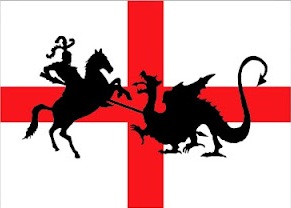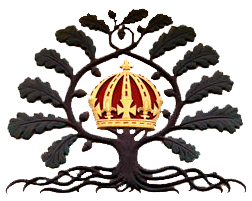Effeminate Synod
 Embryo Parson Posted on
Embryo Parson Posted on  Thursday, December 17, 2015 at 02:01PM
Thursday, December 17, 2015 at 02:01PM While Anglicanism has struggled with it's own particular forms of unmanliness, Roman Catholic writer Leon Podles has extensively documented the effiminacy problem in Roman Catholicism. Anthony Esolen -- remember this guy's name, and read all the stuff written by him that you can find -- shows how Rome's effiminacy problem manifested itself at the recent synod on the family. I'm thrilled that he is now writing for Chronicles Magazine, which all of you should be reading. Here's some quintessential Esolen from the article:
The synod’s final recommendation to Pope Francis is mainly bland and inoffensive. It is also an exercise in unreality. That’s what happens when your mode of thought and expression is neither philosophical and theological, nor earthy and poetic: It does not aspire to reveal the essences of things, and it does not confront the sweat and mire of the created world. The bishops write in sociological patois, abstract and banal at once. Reality escapes them.
Let me illustrate. The document insists on the complementarity of man and woman, and quotes Pope Francis as suggesting that each sex does not know itself except in relationship with the other. But in what does that complementarity consist? The bishops won’t say. Pope Leo XIII, who spent his long pontificate writing about the Christian family, said that the father’s authority in the family, which is a gift to its members, proceeds from the fatherhood of God Himself. The bishops do not cite Leo, nor do they note that fatherhood has been under assault in every Western nation for the last 60 years. Boys spend their school years having their natural energies smothered with drugs, and having their natural bent toward what I call hierarchical adventures frustrated or belittled. The bishops turn aside.
Men are to be like Saint Joseph, they say, the protector of Mary and Jesus, and that is well enough, but some men must be providers for and protectors of women and children even if they do not have Joseph’s meek character. How do we raise all boys, whatever their dispositions, to be strong and faithful fathers? Obviously, we must work with the masculine nature, acknowledging its reality and training it up to maturity. But the bishops ignore the problem. All they do for men is to wag the finger and repeat that tired bit of feminist nagging, that women’s entry into the workplace—often to the detriment of the family—has not been answered by men doing more of the household chores. Real men wear aprons.
The bishops repeat a common reading of Ephesians 5:21, “Submit yourselves to one another,” as if it applied only to men and women in marriage, and not to the whole of the Christian life. Yet almost in the same breath they say there must be no “subordination,” and again the patois gets the better of them. There can be no submission without subordination. If a man submits his energies and his fatherly authority to the welfare of his wife and children, he has established a hierarchy or taxonomy of goods, whereby one good—say, his delight in risk—will be subordinated to another (say, the security of the family). Besides, subordination is what Saint Paul is talking about. His Greek hypotassomenoi is exactly equivalent to Latin subordinati. The Christian life is to be characterized by subordination, as the lower obeys and honors the higher, and the higher submits to the good of the lower. That, after all, is how the body works, as Paul is at pains to remind the egalitarians of Corinth. There is such a thing as a body without a head. It is called a corpse.
And what if it is characteristic of that God-ordained masculine nature to form hierarchies? For nothing dangerous or difficult in this world is ever done without them. They are at the heart of every great cultural institution in the history of man, from the Greek gymnasion to the medieval university to the Renaissance art studio to Bell Laboratories in its heyday. Without hierarchy you cannot dig a canal or build a city wall or fight a battle. Or, for that matter, bring a heathen people to Christ. But the bishops will not consider it. . . .
The bishops, like liberals everywhere, put their faith in programs run by experts rather than in culture. A true builder has to know the ground where he is building and the materials he must use. The program-builder draws a picture on paper and thinks he is done. So the bishops hold forth a couple of programs as solutions, one for the front end and one for the back. They recommend better premarital instruction and quicker annulments.
The one will not help, and the other will probably make matters worse. The fact is, all of a boy’s life should be oriented toward making him a man, and therefore, God willing, a husband and father; similarly for the girl. There is your true and only premarital instruction. Boys are male and girls are female as a biological fact. They will be manly and womanly only if we teach them to be so. As C.S. Lewis says, you cannot castrate and bid the geldings be fruitful. And you cannot teach the high adventure of indissoluble marriage—a genuinely noble aim for manhood and womanhood—if you spend half of your time winking at every sin against that indissolubility. Lawlessness is a teacher.
One final comment, after which I hope I shall never again have to write about a gathering of bishops. The document is effeminate. I do not mean feminine; there is nothing womanly about its disengagement from the pride and passion of man, nothing motherly about its dainty refusal to get the hands dirty in treating sin, nothing like Mary in its looking for a legalistic way out of trouble. The mother who loves her children corrects them and bids them obey their father. The mother who coddles her children and mocks their father does not. The mother who loves her children forgives them their sins. The mother who excuses their sins does not. The mother who loves her children teaches them the truth and holds them to it. The mother who lets her children do as they please, and calls it good enough, does not. There is no strength in effeminacy. When the wolves come, the effeminate flee. That, too, is an old story.





Reader Comments